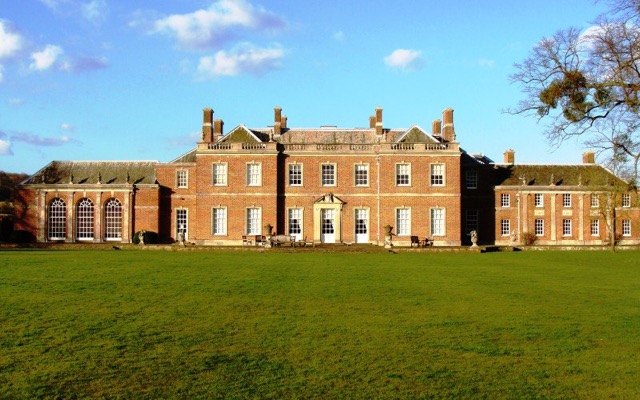
Jane Austen
Oh! It is only a novel!’ . . . in short, only some work in which the greatest powers of the mind are displayed, in which the most thorough knowledge of human nature, the happiest delineation of its varieties, the liveliest effusions of wit and humour are conveyed to the world in the best chosen language.
Northanger Abbey

Steventon Rectory
Jane Austen was born here on December 16, 1775. She was the seventh of eight children. She had 6 brothers-James, George, Charles, Francis, Henry and Edward-and a beloved older sister, Cassandra. She lived at Steventon for 16 years. Her father George Austen was the rector at the nearby church.

Chawton Cottage
The home of Jane Austen, her mother, her sister Cassandra, and the family friend Martha Lloyd starting in 1809. Chawton Cottage was part of Edward Austen Knight’s estate. Many of Austen’s novels were written in the home’s drawing room. The house is now Jane Austen’s House Museum devoted to Jane Austen.

Goodnestone House
Jane Austen’s brother Edward Austen Knight lived with his wife Elizabeth at Goodnestone from 1797 until 1812. It was the estate of Elizabeth’s fathers. Austen often visited this house, and the experience is likely to have shaped her sense of place in Pride and Prejudice.

Godmersham Park
The home of Jane Austen’s brother Edward Austen Knight after 1812. Edward had been adopted by a wealthy cousin Thomas Knight II and made his heir. He inherited the house after Knight’s death. It was here Austen took part in the privileged life of the landed gentry. Jane used the library extensively.

Sydney Place, Bath
After her father’s retirement from clerical duties, the family moved to this house in the fashionable spa town of Bath. Jane lived here from 1801 to 1805, the year of her father’s death. The house is close to Sydney Gardens, an area popular for walking and socializing in Austen’s time.

Assembly Rooms, Bath
A fashionable place for meeting, taking tea, and dancing in Austen’s lifetime. the site features in Northanger Abbey and Persuasion.

Box Hill
A popular outdoor spot in Surrey. Emma Woodhouse insults Miss Bates during a picnic on Box Hill.

No. 8 College Street, Winchester
In the spring of 1816 Jane Austen began to feel unwell. Cassandra brought Jane to this home in 1817 so that Jane could consult physicians in the city. It is thought today that the probable illness was Addison’s Disease. Austen died here on July 18, 1817. She was 41 years old. She is buried in Winchester cathedral.


